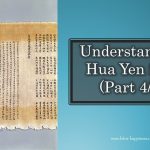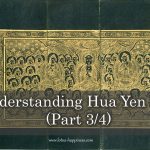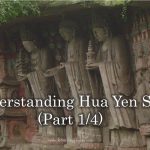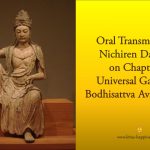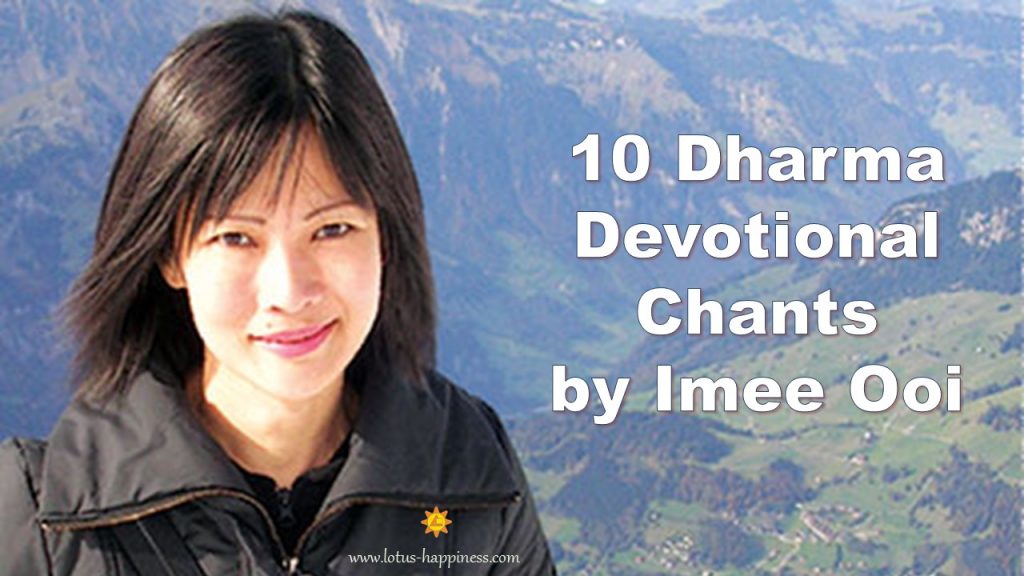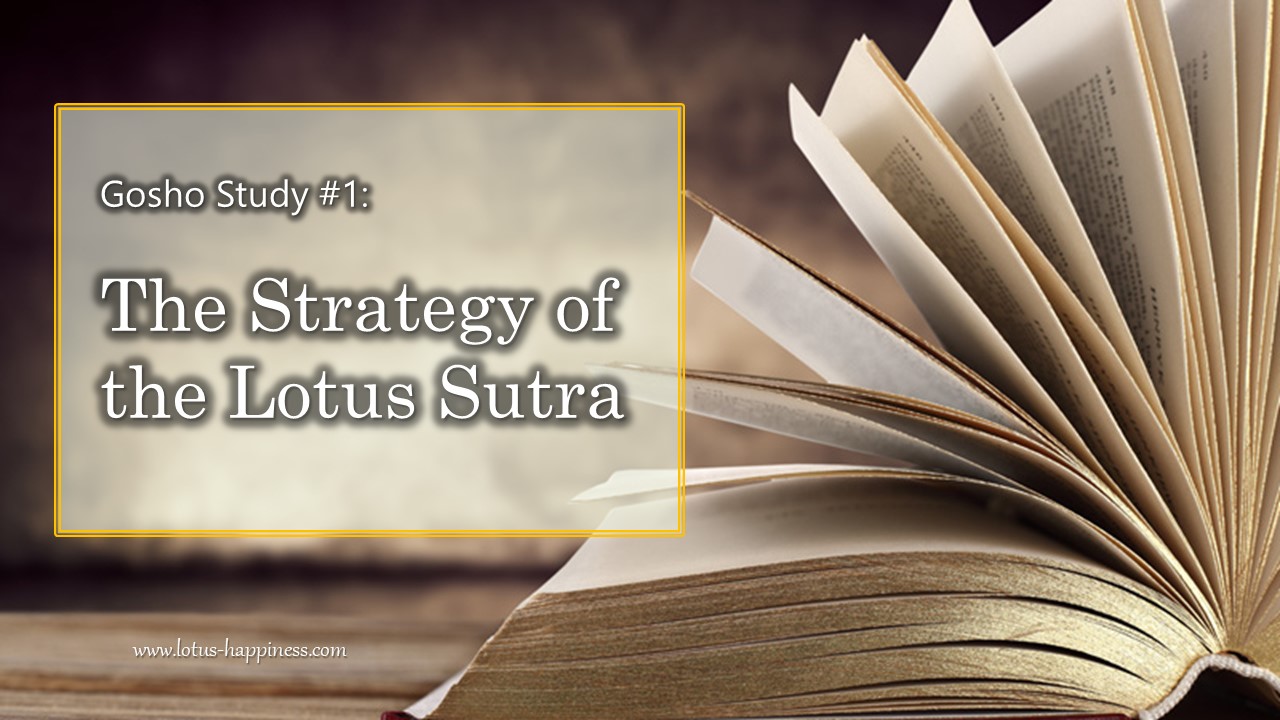Understanding Hua Yen Sect (Part 2/4)
Five Divisions and Ten Schools
Hua-yen sect formulated a complete doctrine embracing all the aspects of Buddhist teachings, and can be classified into Five Divisions and Ten Schools [¤±Ð¤Q©v].
Five Divisions
- The Teaching of Sravakas (Sound-hearers) [¤p¼±Ð]– This is the Hinayana found in the Agama Sutras, which interprets Nirvana as annihilation.
- The Elementary Teaching of Mahayana [¤j¼ªì±Ð]– Beginners of Mahayana in two sections, namely the Realistic [¬Û©l] and the Idealistic [ªÅ©l], representing the Fa-hsiang sect and San-lun sect respectively. It is considered as the elementary because it does not recognize the presence of the Buddha nature in all sentient beings.
- The Final Teaching of Mahayana [¤j¼²×±Ð]– Proficient Buddhists teaching universal Buddhahood and True Suchness. This teaching asserts that there is only emptiness and all Dharmas are illusory or just in conditioned existence. This is the teaching of Tian-tai sect.
- The Abrupt or Sudden Teaching of Mahayana [¤j¼¹y±Ð]– Direct and intuitive way of teaching, i.e. through right concentration of thought, meditation, and faith, without studying scriptures or upholding religious precepts. The two concepts of emptiness and existence are eliminated as they do not have any influence on the mind. This is the teaching of the Ch’an sect.
- The All-Round or Complete Teaching of One Vehicle [¤@¼¶ê±Ð]– It combines all teachings into an all-embracing vehicle. It expounds the teaching that all things (the so-called ten thousand things) in the phenomenal world represent the noumenon, i.e. the absolute mind. On the other hand, each phenomenon is said to embrace every other phenomenon, being the simultaneous manifestation of the noumenon. That is ‘the all is the one, and the one is the all’. This is the teaching of Hua-yen sect.
Ten Schools
The Five Divisions are further separated into ten schools, namely:
- The reality of self and Dharma (mind and matter) [ÚªkѦ³©v]– such as Haimavatah, Dharmottariyah, Bhadrayaniyah, Sammatiyah, Sannagarikah and the like in Hinayana, which believe that both self and Dharma exist in reality.
- The reality of Dharma, but not self [ªk¦³§ÚµL©v]– such as Uttarasailah, Bahusrutiyah, Mahisasakah, and the like in Hinayana, which believe that the only Dharma exists in reality, while self doesn’t.
- Dharmas have neither creation nor destruction [ªkµL¥h¨Ó©v]– such as Kaukkutikah, Dharmaguptah, Kasyapiya, Jetavaniyah, Avarasailah and the like in Hinayana, which believe that the Dharma exists at present, but not in the past nor in the future.
- Present Dharmas are both apparent and real [²{³q°²¹ê©v]– such as Prajnativadinah in Hinayana, which believe that the Dharmas at present are both apparent and real.
- Common or phenomenal ideas are wrong, and fundamental reality is the only truth [«U¦k¯u¹ê©v]– such as Lokottaravadinah in Hinayana, which believe that the Dharmas are unreal in the mundane world, but real in the transcendental world.
- Dharmas are merely names [½Ñªk¦ý¦³©v]– such as Ekavyavaharika in Hinayana, which believes that Dharmas do not exist in reality, but is given the names only.
- All Dharmas are empty [¤@¤Á¬ÒªÅ©v]– it refers to the elementary teaching of Mahayana, such as the Prajna sutra, the doctrine of the Mean, etc.
- The Bhutatathata is not unreal [¯u¹ê¤£ªÅ©v]– it refers to the final teaching of Mahayana, such as Awaking of Faith on Mahayana, Lankavatara Sutra, which reveals the doctrine of the nature of True Suchness.
- Phenomena and their perceptions are to be eradicated [¬Û·Qѵ´©v]– it refers to the Sudden Teaching of Mahayana, such as Ch’an (or Zen).
- The perfect, all inclusive and complete teaching of One Vehicle [¶ê©ú¨ã¼w©v]– it refers to Hua-yen’s doctrine of Dharmadhatu.
The Philosophy of Hua-yen Sect
Hua-yen sect attempted to formulate a complete doctrine embracing all aspects of Buddhist teaching. Based on the Avatamsaka Sutra, Hua-yen’s doctrine emphasizes the mutual identity and inter-dependence of all phenomena, which are usually called ‘Shih’ [¨Æ] in Hua-yen’s terminology. In other words, all things are inter-related and mutually dependent for their empirical and concrete existence. In Buddhism, it is said that the existence is conditional, or it is known as the characteristic of impermanence or emptiness. However, like Tian-tai sect, they are identical in nature, as they have same self-nature in Dharmahadtu (i.e. Dharma realm — to be elaborated later). The self-nature is usually called ‘Li’ [²z] in Hua-yen terminology. The idea of the self-nature is somewhat like the Noumenon, the Absolute, Buddha Nature, True Suchness, Tathagataghaba, etc. While retaining their own absolute nature, all phenomena nevertheless are subject to conditions and degenerate into the form of the conditioned, impure and mundane world. (The concept of ‘Li’ and ‘Shih’, and its relationship will be elaborated in section 67.2.) Therefore, each part is dependent on the whole, and at the same time, contributes to the whole. All phenomena are the manifestation of one immutable noumenon, and they are in perfect harmony with each other, like the different waves of the same water. These are the concepts of Totality and Non-obstruction in Hua-yen sect. It is also called Dharmadhatu Dependent Arising, which will be discussed in detail later.
The Doctrine of Dharmadhatu
What is Dharmadhatu? It is usually translated as ‘realm’. A realm is defined as a territory, sphere, or domain, within which certain activities and thoughts take place according to certain criteria. A realm has its own boundaries or frame of reference under designated conditions. Taking water as an example, ordinary people see water as a liquid for drinking. However, chemists see water as a compound of oxygen and hydrogen; philosophers see water as a matter of causation, etc. In Buddhism, water is just a name given to one of the manifestations of Dharma nature, or the outflow of supreme Buddhahood / True Suchness. Thus, the functions of water may vary when the frame of reference is set in different ways, or when it is viewed from different perspectives. There are many realms within one single object, say water.
However, it should be noted that each of the realms has its own activities for water, yet all the realms can exist simultaneously. This leads to one of the important concepts in Hua-yen sect — the Doctrine of Simultaneous Arising [¦P®ÉÑ°_].
Moreover, these realms do not obstruct or interfere with each other, and mutually penetrate one another in harmony. This leads to another important concept in Hua-yen sect — the Doctrine of Simultaneous Non-obstruction [¦P®ÉµLê].
Non-obstruction and Totality
The theme of Hua-yen philosophy hinges upon the concept of Dharmadhatu. However, the concept of Non-obstruction and that of Totality are the most significant characteristics in Dharmadhatu.
Non-obstruction can generally be defined as the complete freedom from all bindings, and the infinite possibilities of interpenetrations among the realms, despite of the variations in space and time. Totality can generally be defined as all-embracing and all-merging aspects of all realms. The two concepts can be applied to Buddha-nature.
Non-obstruction, in Hua-yen’s doctrine, has a broader meaning of ‘boundary wall’, because the ‘walls’ can be intangible, abstract and submissive, yet they have a definitely restricting or limiting function. For ordinary people, they have to break through the ‘walls’ in order to shift from one realm to another. As they use to do and think from one particular viewpoint or in a designated framework in the mundane world, they may require great effort and patience, insight and wisdom to break through the ‘walls’ or remove the ‘blockages’. A complete removal of the ‘blocking walls’ in the way of Totality will enable one to reach the realm of Non-obstruction, which are again the goal and the core of Hua-yen.
The concept of Non-obstruction is developed from the doctrine of Emptiness, because only the Emptiness has no boundary wall by itself, thus no obstruction at all. One should have a thorough understanding of the doctrine of Emptiness in order to realize the truth of Non-obstruction.
Mutual Penetration and Mutual Identity
The Hua-yen philosophy can be summarized in two basic principles, namely the Principle of Mutual Penetration and the Principle of Mutual Identity.
The former corresponds to the Principle of Dependent Arising that all things depend upon one another for their existence (and functions) and extinction. In Hua-yen’s doctrine, it has a broader meaning, such as simultaneously mutual arising, simultaneously mutual entering, and simultaneously mutual containment.
The latter is almost an equivalent of the Heart Sutra’s dictum that ‘Form is Emptiness, and Emptiness is Form’. They are mutually identical, and in compliance with the Principle of Non-duality.
Based on these theories, Hua-yen doctrines create the most magnificent scale in the cosmic world:
- The universe can be infinitely large or small in a relative sense, depending on how you measure it.
- The ‘larger’ universe (such as the solar system) embraces the ‘smaller’ ones (such as the atoms). It is just like a structure extending in infiniteness in both directions to the infinitely large or infinitely small.
- The ‘smaller’ universe (such as the tip of tiny hair), not only contains the infinite ‘lesser’ universe within itself, but also contains the infinite ‘large’ universe (such as the Three Thousand Worlds).
- ‘Time’ is no longer a concept of the flowing of events in the past, present and future, as all these events are totally inter-penetrated in the ‘eternal present’.
Fa-tsang’s Hall of Mirror
In order to help Empress Wu Tse-tien [ªZ«h¤Ñ] to understand the principle of totality, the great master Fa-tsang led her into a room lined with mirrors. He fixed the huge mirrors on all four walls, on the ceiling and the floor, all facing one another. He then placed a statue of Buddha at the center of the room with a candle beside it. The Empress was immediately inspired, and managed to visualize the Principle of Totality and the principle of Non-Obstruction. With the infinite inter-reflections among all the mirrors, the Buddha’s images are found in the reflections in each mirror for all other mirrors, together with the specific Buddha’s image in each particular one, which are also found in turn in every reflection of any other mirror. It demonstrates the Principle of Mutual Penetration and the Principle of Mutual Identity.


